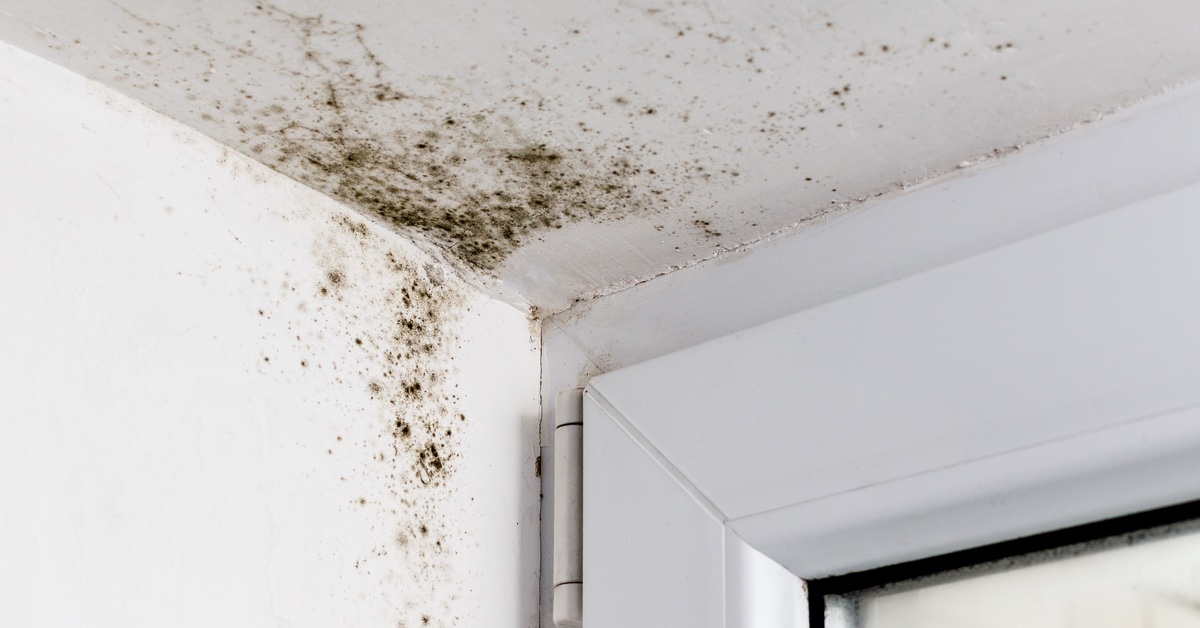It has been raining heavily in Germany for weeks now, making the humidity sometimes feel unbearably high. Many people don’t even want to ventilate in the humid outdoor air. Read here why this could become a problem.
To prevent mold from forming in your home, you should ventilate regularly. When we exhale, shower or cook, small droplets are created in the air, which slowly increase the humidity. This moisture must escape to the outside: So open the windows! But what if it is also damp outside due to heavy rain? Doesn’t that bring even more moisture into the rooms?
Reading tip: Ventilate properly: avoid mold and save money
Rain does not equal moisture
Just because it is raining constantly outside and the air feels humid does not automatically mean that the humidity is really high. Many factors play a role here, the most important being the temperature. Warm air holds more moisture than cold air.
It is usually warmer in living rooms than outside. This should be the case, as it is the only way to prevent mold. Cool air contains less moisture than warm air. A rule of thumb says that the maximum moisture content of the air approximately doubles when the temperature rises by 10 degrees Celsius. As the air warms up, its ability to absorb moisture increases. For this reason, a greater amount of moisture can be removed from living spaces in the cold months by ventilating with cooler outside air.
You may also be interested in these articles:
Be sure to ventilate even when it rains
You should ventilate even when it’s raining, because a shower cools the air down to a few degrees, especially in summer. This is ideal for ventilation, as moisture collects in rooms at any time of year and needs to get out. So if you ventilate after heavy rain, the warm air full of moisture can easily escape outside.
Even if a little more moisture than usual flows into your home due to rain, fog or snow, it will be absorbed by the warmer indoor temperature.
How to ventilate properly
That’s why it’s so important to heat in winter. Only when the air inside is warm can it bind moisture. We recommend no less than 16 degrees in your own four walls. This immediately reduces the risk of mold.
But the right technique is also important: Only ever ventilate intermittently, preferably in the morning and evening. This allows the air to exchange properly. If you leave your window ajar, the interior cools down too much, especially in winter. This encourages mold growth.
The exception
If it is just as warm outside as inside, the air exchange may not be quite as successful. If the humidity outside is high, the droplets in the interior can no longer be transported. However, this rarely happens in Germany, even in summer, and when it does, it tends to be during the day. If you ventilate early in the morning and late in the evening, it is usually cooler outside than inside.
If the humid weather persists over a long period of time, a hygrometer 🛒 can also help. The device provides information about the humidity and gives you an indication of when it is appropriate to ventilate – i.e. when the humidity outdoors is lower than indoors.

If you have the feeling that your home is permanently too damp, you should consider a dehumidifier. 🛒 think about it.
Source: utopia, geo
The links marked with the shopping cart 🛒 are affiliate links. The products are researched to the best of our authors’ knowledge and some are also recommended from personal experience. If you click on such an affiliate link and buy something through it, our editorial team will receive a small commission from the online store in question. For you as a user, the price does not change and there are no additional costs. The income helps us to offer you high-quality, entertaining journalism free of charge.
